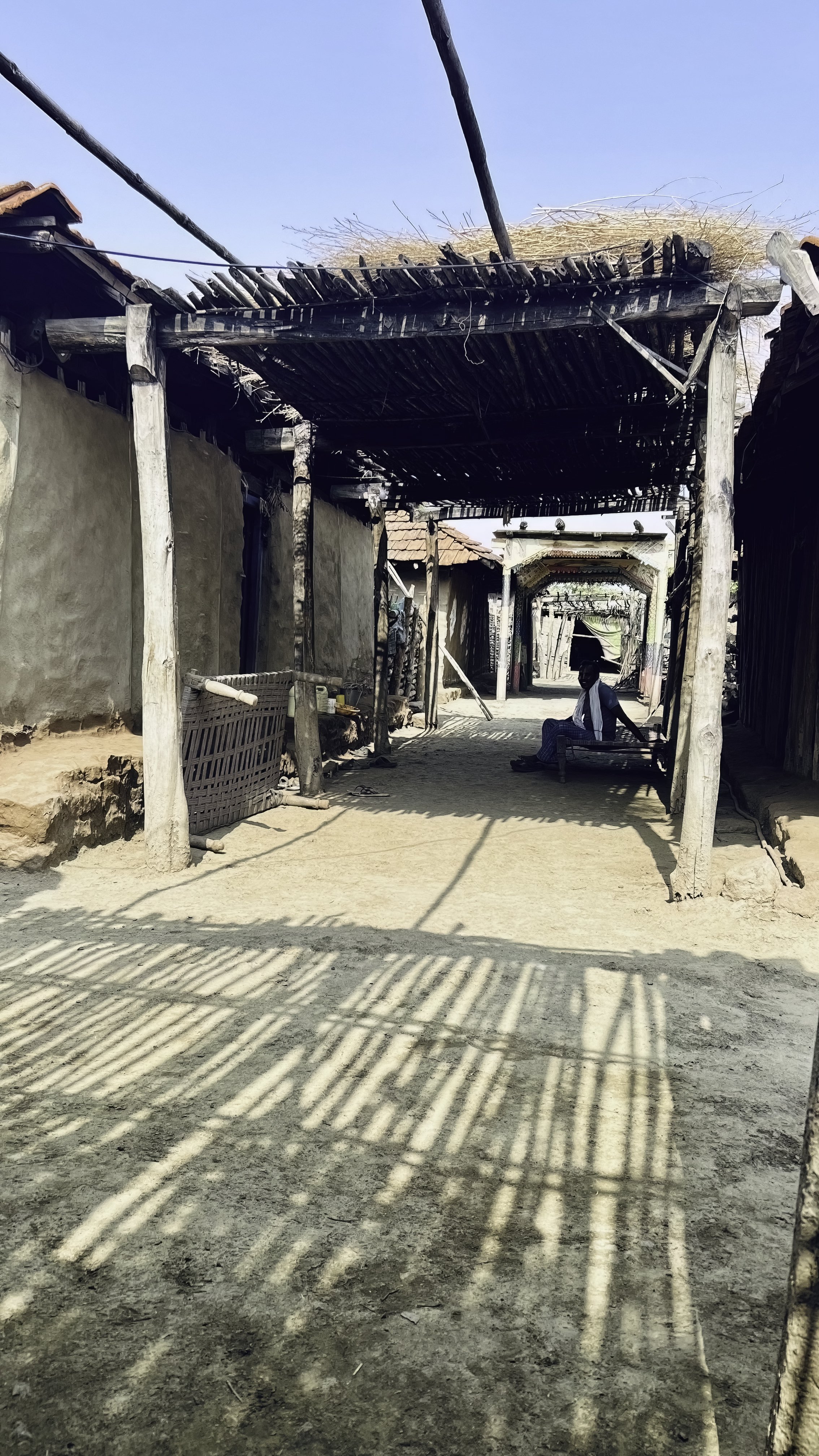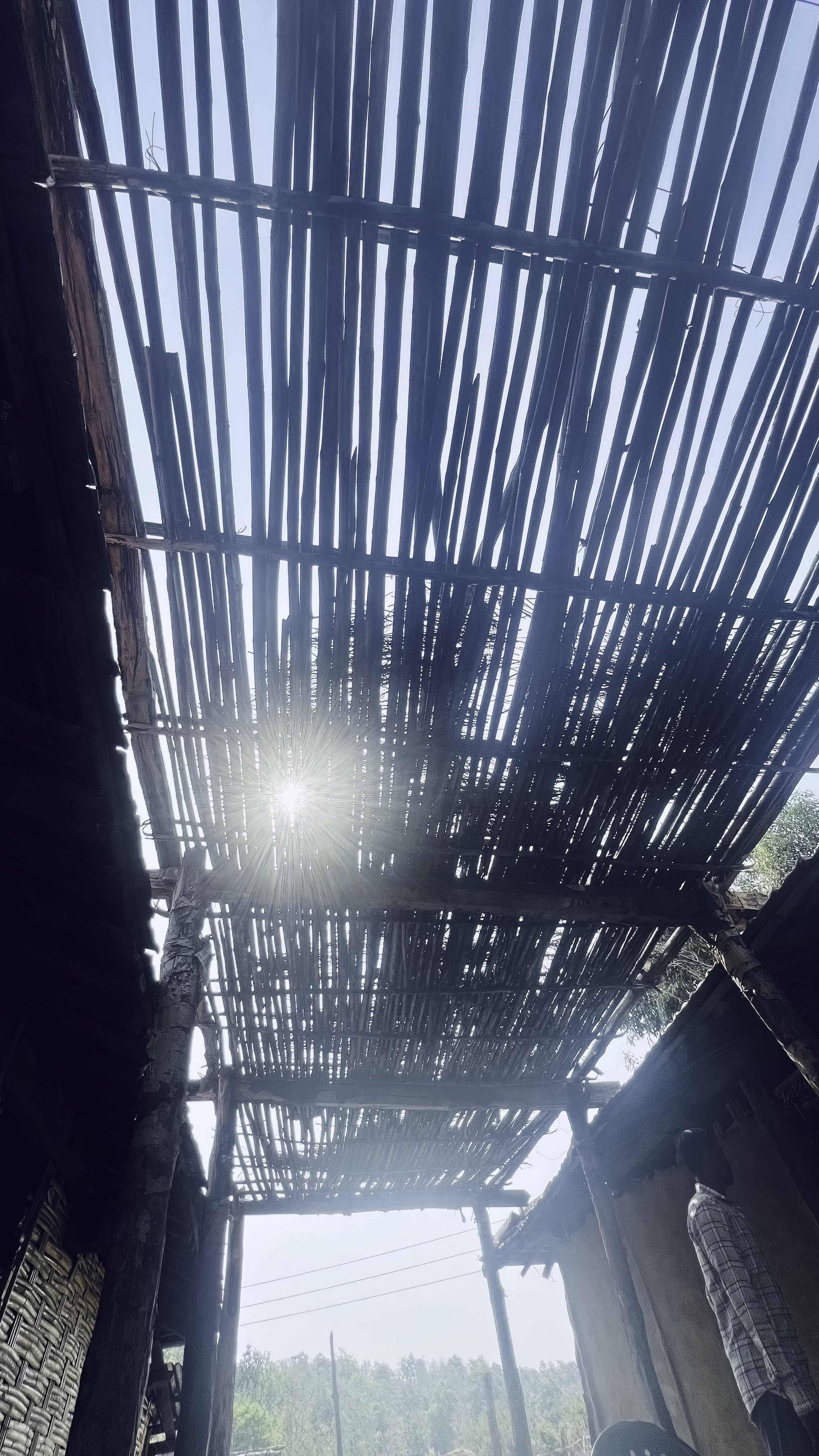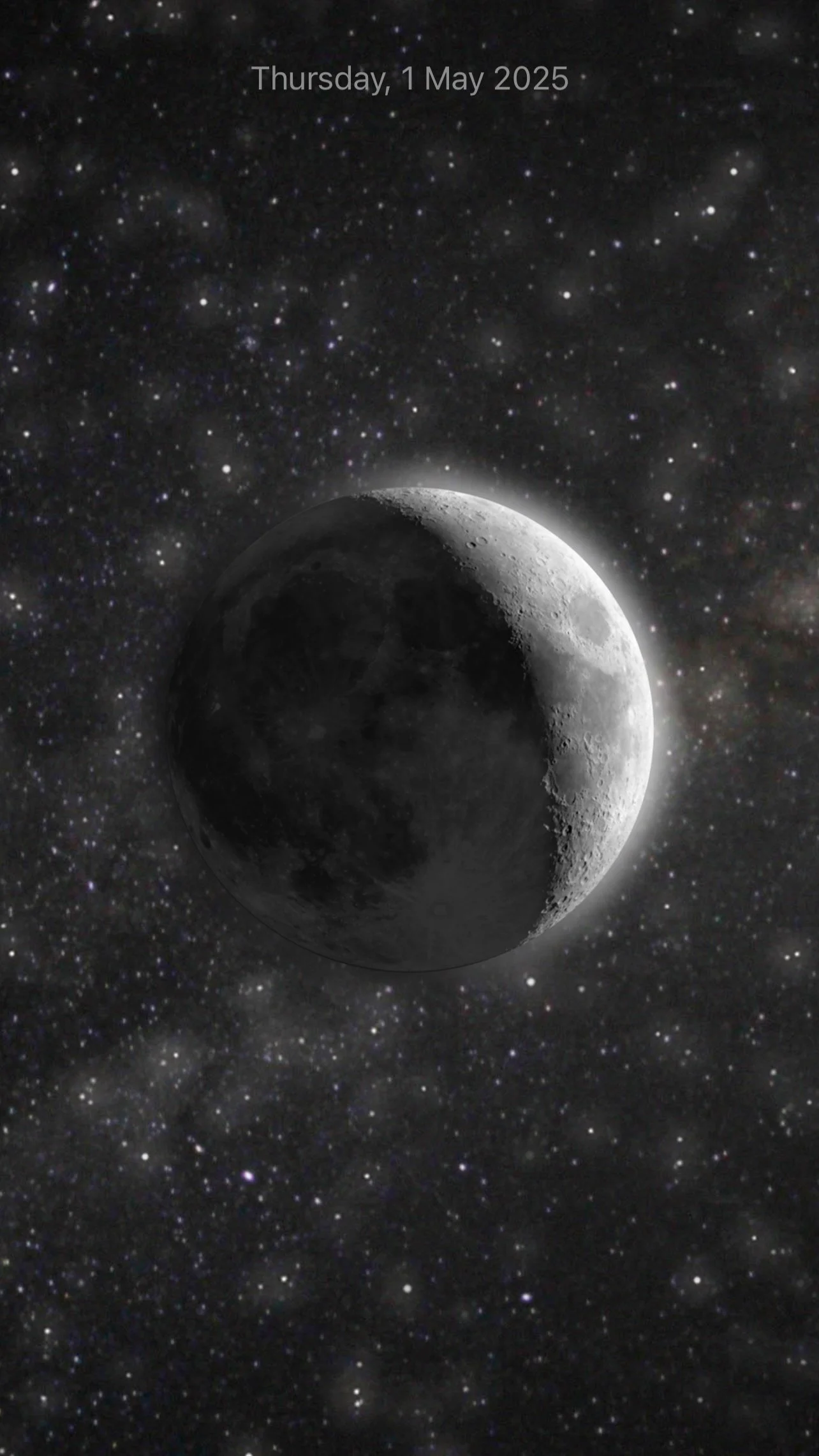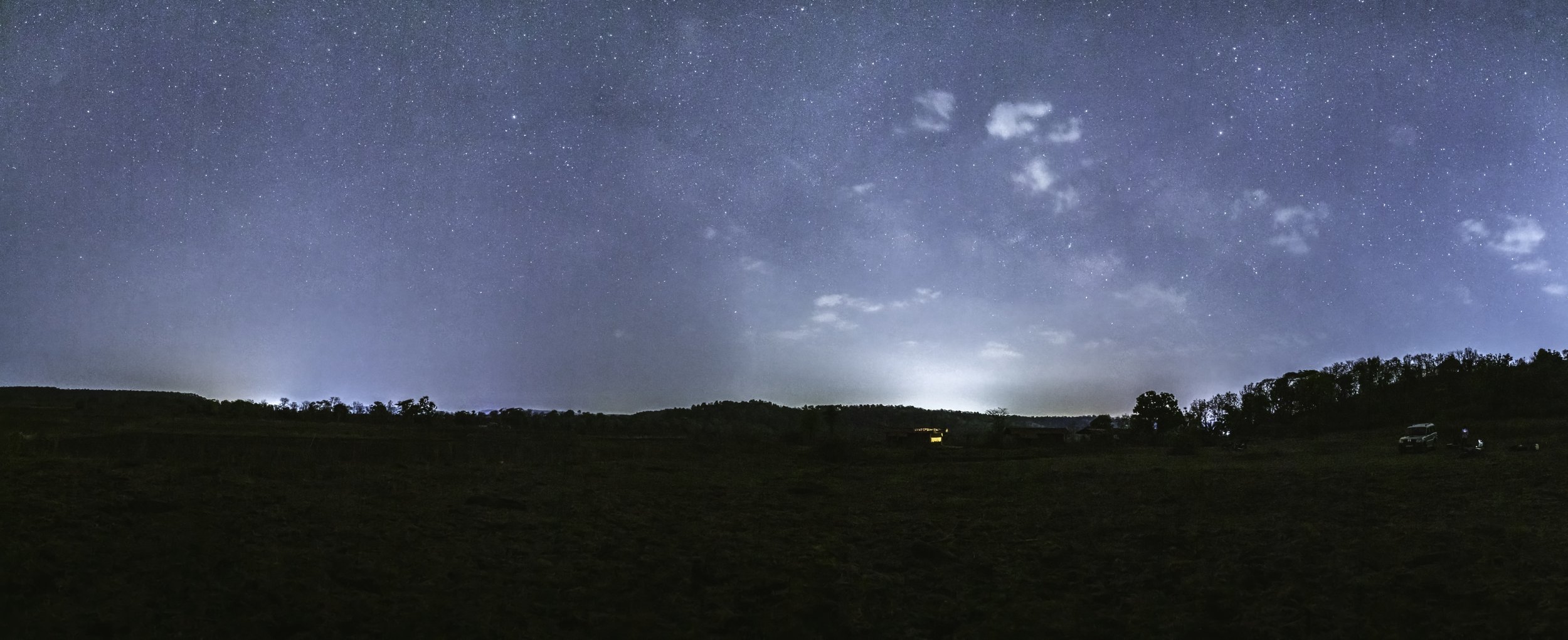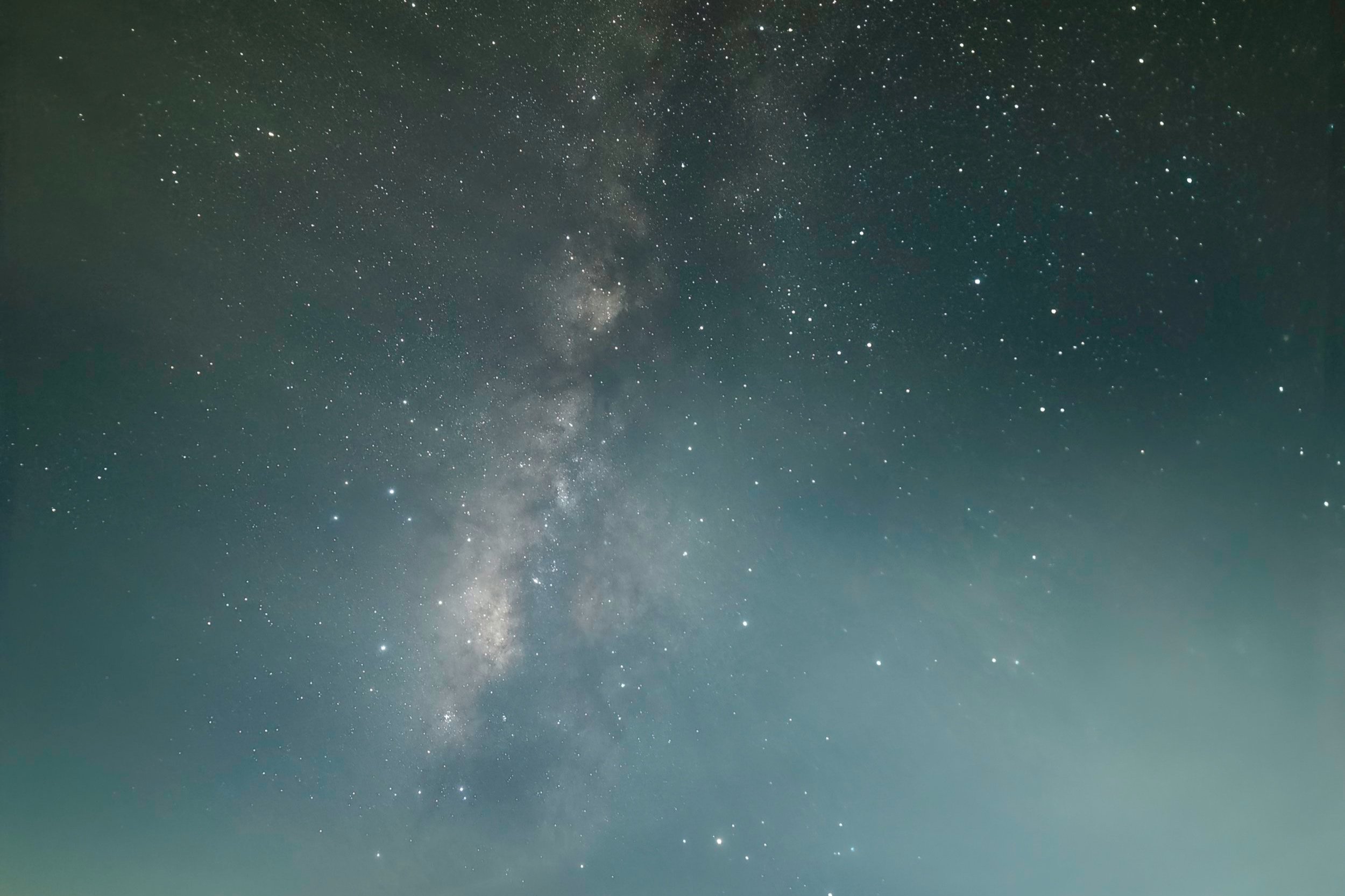Dark Skies of Gundala
Milky Way Landscape Panorama, Milky Way Photography & Timelapses from Bortle 2 Skies
The Gond village of Gundala, Telangana, India
There are few views as awe-inspiring as seeing the Milky Way from a dark site. If someone unfamiliar with it sees a picture of the Milky Way without a terrestrial reference point - like you see here for example - they might assume it was taken with a telescope. But the scale of the Milky Way is huge! You don’t need a telescope to see or photograph it. Binoculars or a telescope will certainly show you more detail, but they’re not a requirement. There have been many nights I’ve brought a a whole selection of equipment along for stargazing and photographing and haven’t even touched it.
When you think of photographing the Milky Way, you usually think of doing it from a dark location away from light pollution but given the way modern cities have expanded it isn’t always possible to find a dark location close to any major city especially in India. There is no substitute for a truly dark sky, but I knew it was possible to photograph the Milky Way from certain areas in Telangana surrounded by dense forests. Some of these sites are Bortle 2 and 3 allowing for some good options to see and photograph the Milky Way. The capital city of Hyderabad itself is a Bortle 8-9 sky as you can see in the light pollution map below but that’s not the end - South India itself is very limited in terms of dark skies. A few weeks back I had tried from the vicinity of Nirmal, a Bortle 3-4 sky. You can see the Star Trails here and the Milky Way here.
Read more about the Bortle Scale.
This time too I was working in collaboration with HyTiCos and were stationed close to the Gond village of Gundala in the Kumuram Bheem Asifabad district of Telangana. The district of Kumuram Bheem Asifabad is in the north of the Indian state of Telangana. The town of Asifabad is its district headquarters and Kagaznagar as its largest town. It is named after Gond tribal leader Kumuram Bheem. It was earlier part of the Adilabad district and it became a new district in 2016. The district shares boundaries with Adilabad, Nirmal, Mancherial districts and with the state boundary of Maharashtra.
I did numerous sets of stacks for the Milky Way facing East and East-South East and South for the Core, facing North for the outer edge of the Milky Way and even straight up - which I processed two ways for colour and detail separately. I was also able to do a 180° panorama starting from North to South. Finally as the sun rose I did a holy grail sunrise timelapse which shows the planets - Venus and Saturn accompanying each other across the night sky with the sun chasing them out of the frame as it rose in the East. The Moon Phase this time was a 9% Waxing Crescent Moon on 30 April 2025 which had already set at 21:41 hrs and would not rise till 08:45 hrs on 01 May 2025. I have the moon phases of both 30th and 1st May below as a reference.
Facing East-South East
Exif: Canon 1Dx Mark ii | Samyang (Rokinon) 14mm f/2.8 IF ED UMC | f/2.8 | 19 seconds | ISO 6400 | Manually focused with a Bahtinov Mask & WB set to Manual at 3550k.
Stacked Image composed of 25 Light frames and 25 Dark Frames for Noise elimination. The cottage in the foreground is lit from within with a tiny Lume Cube Air wearing a Warm Diffuser
A little bit of the history and geography of the area.
The predominantly tribal region around the town of Asifabad was ruled by many dynasties like the Kakatiyas, Mauryas, Satavahanas, Chalukyas, Qutub Shahis, Asaf Jahis and Gonds. In the early 20th century, the district was known as Jangam and Asifabad served as its headquarters. In 1905, the district was merged into the neighbouring Adilabad district. In 1913, Asifabad was made as headquarters of the district prior to the status being lost to Adilabad town in 1941. Following the creation of Telangana state, the districts were re-organized in 2016. As a result, Asifabad district was again carved from Adilabad district and was renamed after the Gond martyr Komaram Bheem. About 12.48% of the population today speak Gondi. Gondi, natively known as Koitur is a South-Central Dravidian language, spoken by about three million Gondi people, chiefly in the Indian states of Madhya Pradesh, Maharashtra, Chhattisgarh, Andhra Pradesh, Telangana and by small minorities in neighbouring states. Although it is the language of the Gond people, it is highly endangered, with only one fifth of Gonds speaking the language. Gondi has a rich folk literature, examples of which are wedding songs and narrations. Gondi people are ethnically related to the Telugus. Gondi is the largest minor Dravidian language by number of speakers. The origin of the name Gond, used by outsiders, is still uncertain. Some believe the word to derive from the Dravidian kond, meaning hill, similar to the Khonds of Odisha. Another theory, according to Vol. 3 of the Worldmark Encyclopedia of Cultures and Daily Life, is that the name was given to them by the Mughal dynasty of the 16th–18th centuries. It was the Mughals who first used the term "Gond", meaning "hill people", to refer to the group. The Gonds call themselves Koitur (Kōītōr) or Koi (Kōī), which also has no definitive origin.
Kumuram Bheem Asifabad district has two revenue divisions; Asifabad and Kagaznagar and is sub-divided into 15 mandals one of which is Tiryani. Tiryani is a village and a deep forest area in the Kumuram Bheem district. Schedule Tribes are the majority people in this mandal who live by hunting animals and the great Arjun valley is located 12 kms from the mandal headquarters where, legend says, the Pandavas spent some time during their Vanavasa (exile). Tiryani comprises a total of 37 villages, each contributing to the vibrant and diverse demographic makeup of the region. The area plays a crucial role in the overall administration and rural development of Kumuram Bheem Asifabad District. Gundala is one of the villages located in the Tiryani Subdivision spread over 189 km² with a population of 697 as recorded in the 2011 Census and 176 households. I had the honour and pleasure of being invited into one of the homes for a delicious lunch. The following photos are from within the cosy homes of the villagers. The first from the aangan (courtyard) of one house looking into a neighbouring house and in the background decorations from a recent wedding are visible. The second photo is looking up at the thatched roof of the courtyard and how it diffuses the harsh afternoon sunlight. The houses are constructed of bamboo, mud and repurposed wood from the surrounding forests and stay unbelievably cool during the hot summers of the Deccan. I did not venture further with the phone for pictures because the Gond are a private people and it would have simply been discourteous to barge into their home the first time they’ve invited. The lunch served was rice, sambar (a local version of lentils) and rasam (a tamarind broth containing spices, herbs, and vegetables) with curds, papad (a thin, crispy, fried or baked snack made from lentil flour, or other ingredients like rice, tapioca, or potato) and an awesome spicy, tangy pickle which made my day.
The Gunjala Gondi lipi or Gunjala Gondi script is a script used to write the Gondi language, a Dravidian language spoken by the Gond people of northern Telangana, eastern Maharashtra, southeastern Madhya Pradesh, and Chhattisgarh. Approximately a dozen manuscripts in the script were recovered from Gunjala, a Gond village in Adilabad district of Telangana, by a team of researchers from the University of Hyderabad, led by Professor Jayadheer Tirumala Rao. The script and preliminary font were unveiled in early 2014.
In this audio clip a local native describes one of the customs they have adhered to from ancient times while clearing the forest of the dead leaves and broken debris. Some call it forest fires but climate change has increased periods of drought and extreme heat, which make wildfires more severe and dangerous, threatening the loss of life and ecosystems. However, wildfires have ecological benefits for forests. Small, low-intensity fires help rejuvenate forests and are overall beneficial for conservation. Controlled use of wildland fires for positive environmental effects is common around the world. Wildfires that are planned and regulated are often referred to as “prescribed” or “controlled” burns. While all fires have the potential to become dangerous to property and life, controlled burns are planned extensively and performed with tight safety parameters. Humans have been performing such burns for thousands of years and for multiple reasons.
Ecosystems benefit from periodic fires because they clear out dead organic material. As dead or decaying plants begin to build up on the ground, they may prevent organisms within the soil from accessing nutrients or block animals on the land from accessing the soil. This coating of dead organic matter can also choke outgrowth of newer or smaller plants. When humans perform a prescribed burn, the goal is to remove that layer of decay in a controlled manner, allowing the healthy parts of the ecosystem to thrive. Moreover, nutrients released from the burned material, which includes dead plants and animals, return more quickly into the soil than if they had to slowly decay over time. In this way, fire increases soil fertility.
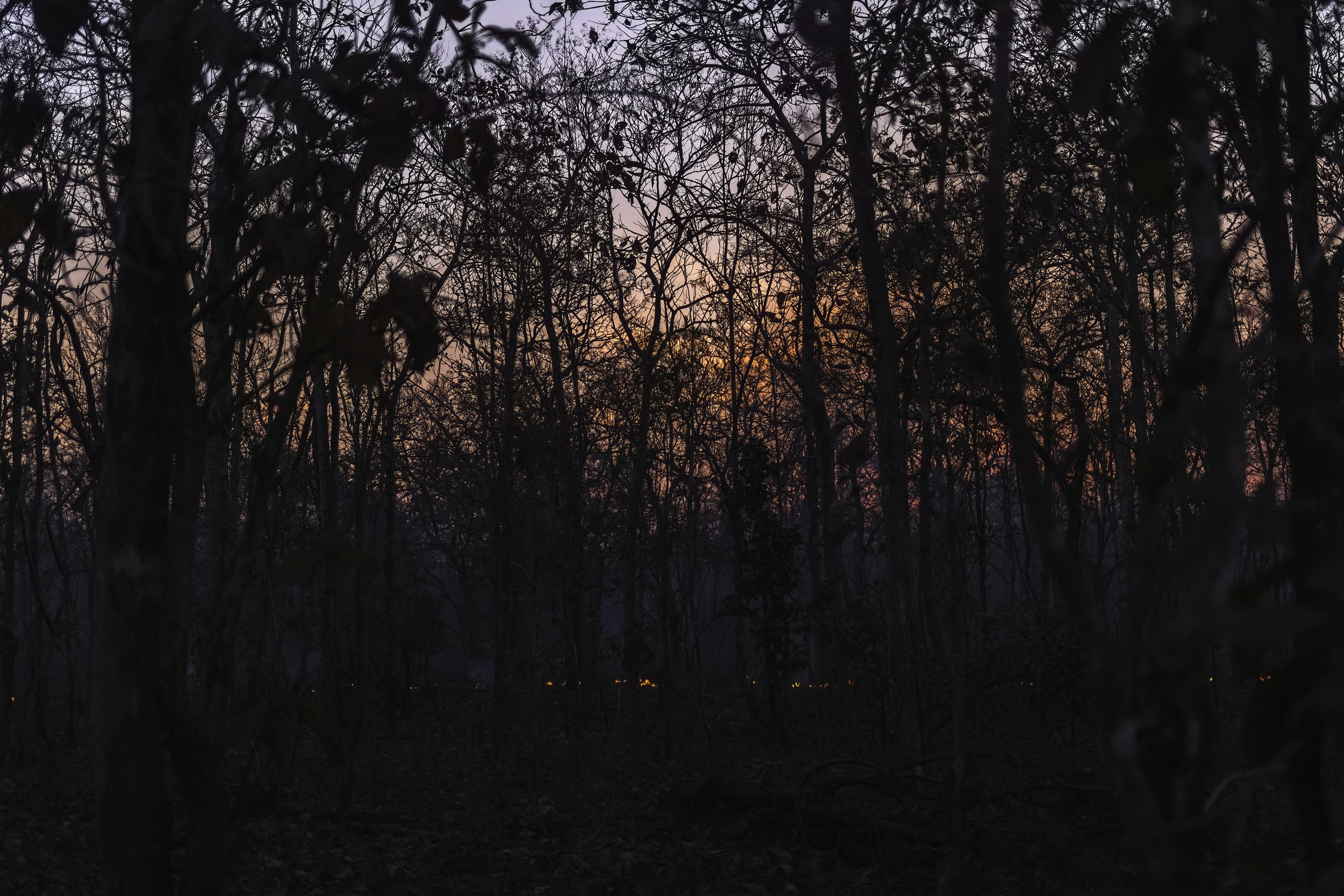
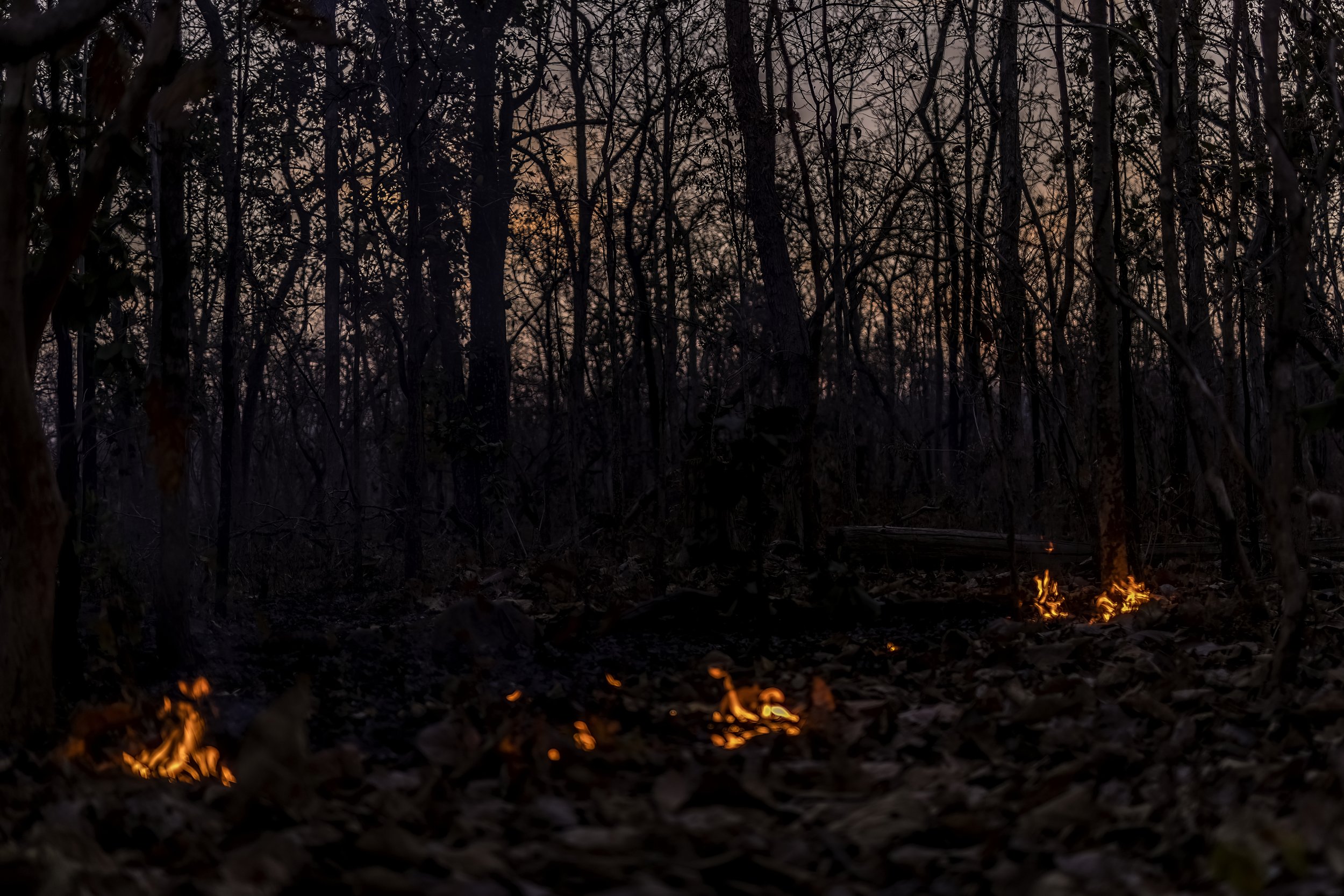
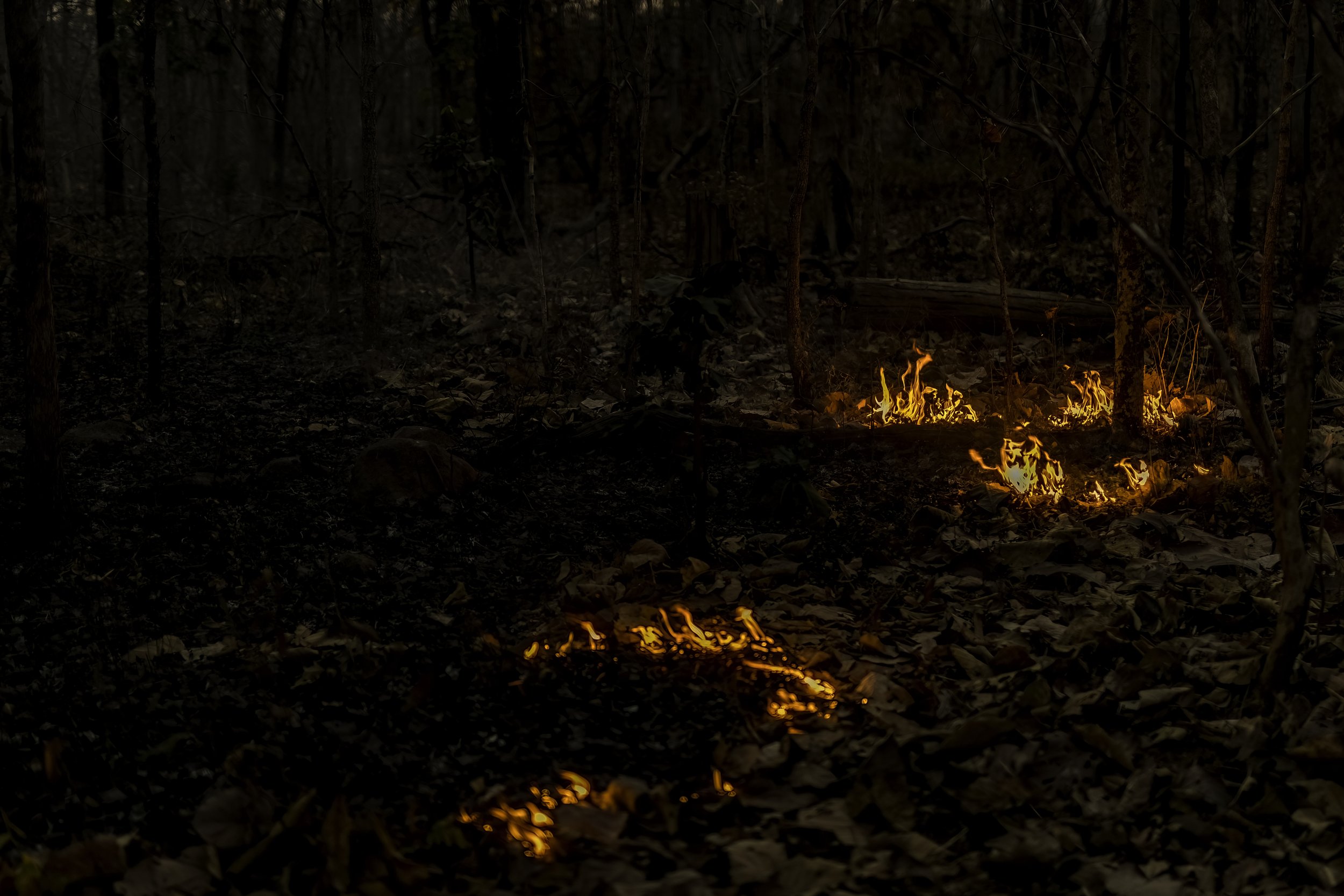
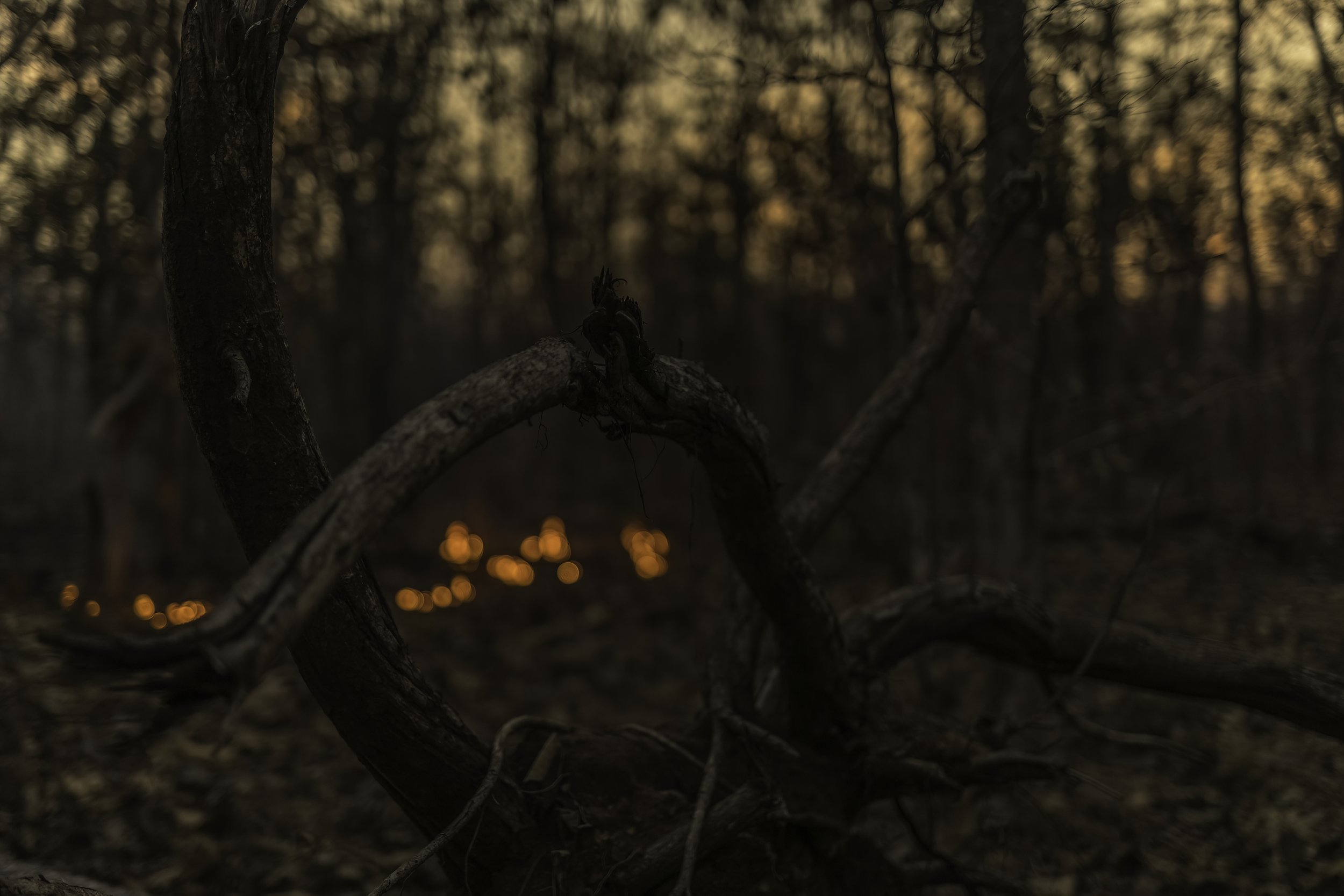
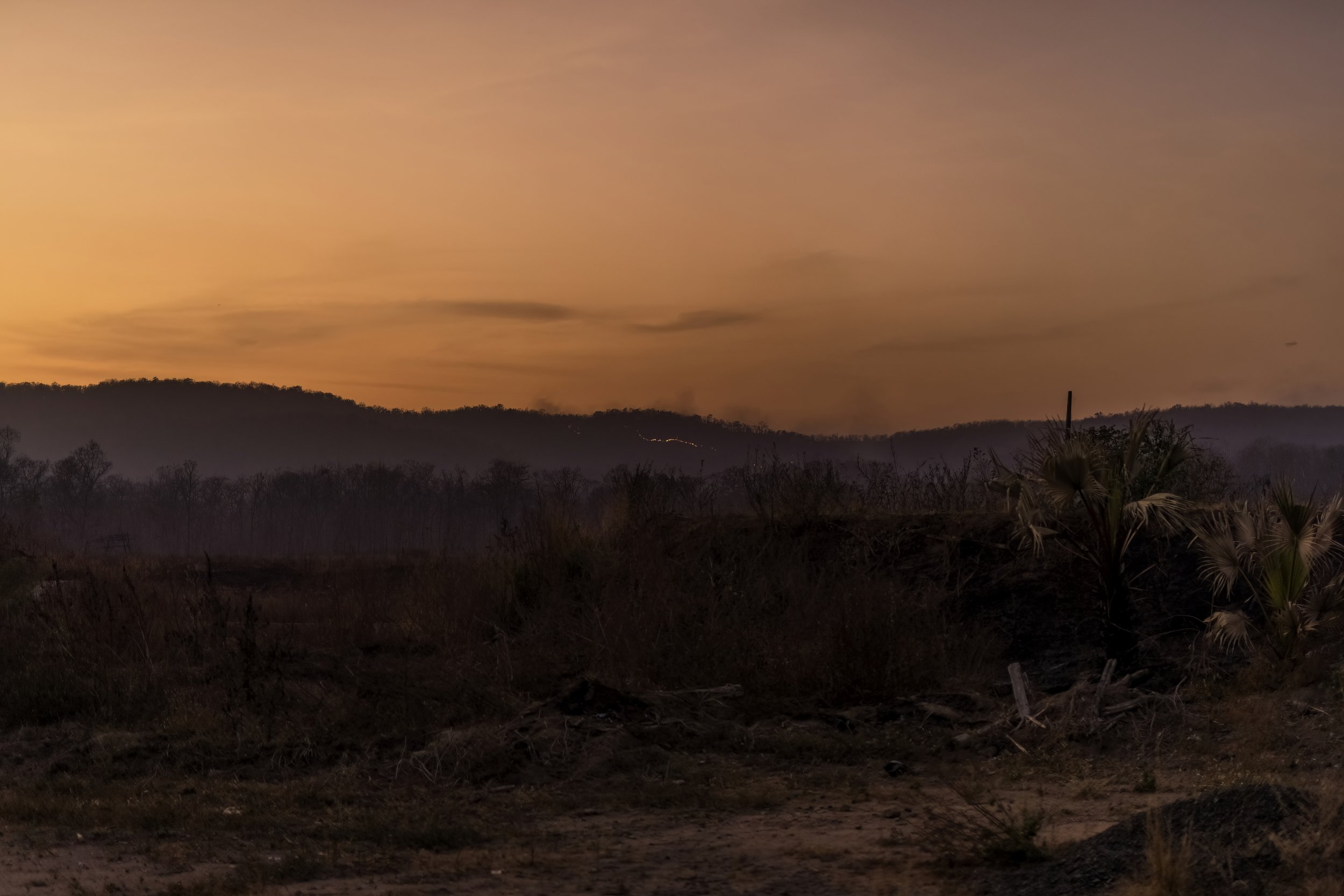
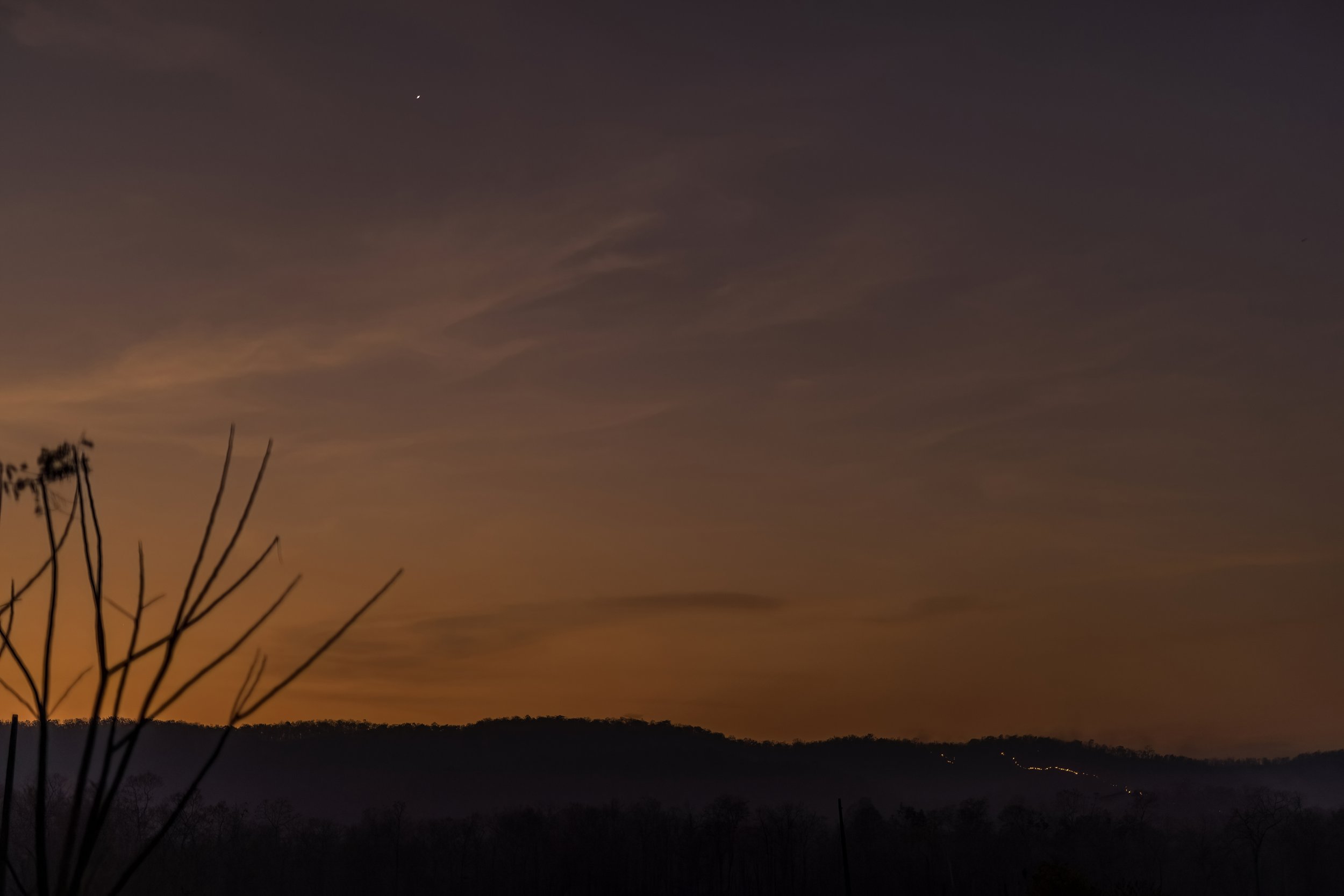
From a geographical perspective the district is spread over an area of 4,300 km² with hills dominating the western part of the district and the Pranahita River running parallel to the east. Beginning at the confluence of the Wardha & the Wainganga rivers the Pranahita River enjoys a large riverbed and is the largest tributary of the mighty Godavari River covering about 34% of its drainage basin conveying the combined waters of the Penganga River, the Wardha River (originating at Pulgaon), and the Wainganga River (originating at Bhandara City). By virtue of its extensive network of tributaries, the river drains a large part of the Vidarbha region in Maharashtra, as well as the southern slopes of the Satpura Range in southeast Madhya Pradesh. It flows along the border of Gadchiroli district in Maharashtra and Kumuram Bheem Asifabad district in Telangana. The Pranahita sub-basin is the seventh largest in India, measuring about 109,078 km², making it larger than the individual basins of significant rivers such as the Narmada River and Kaveri.
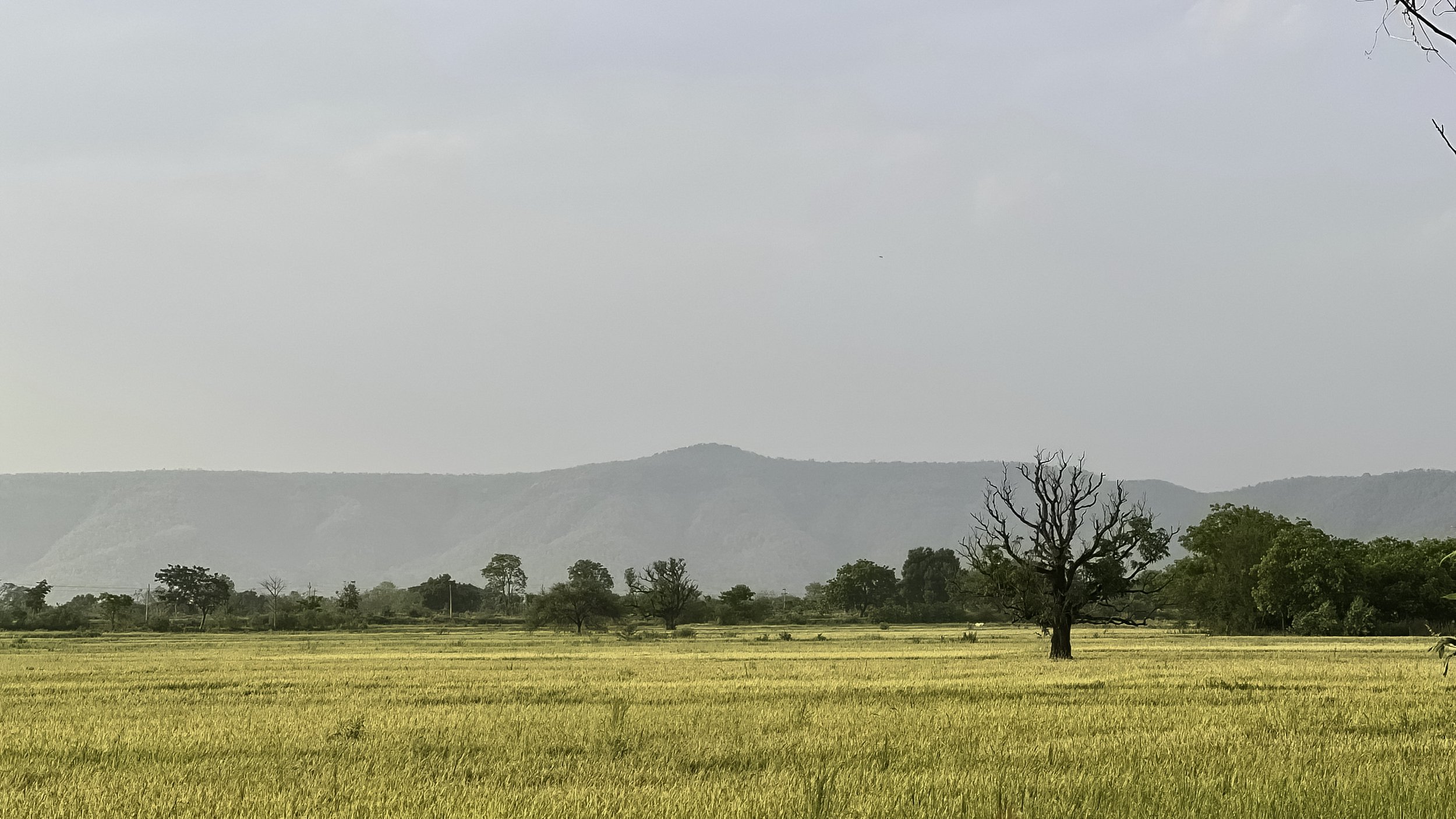
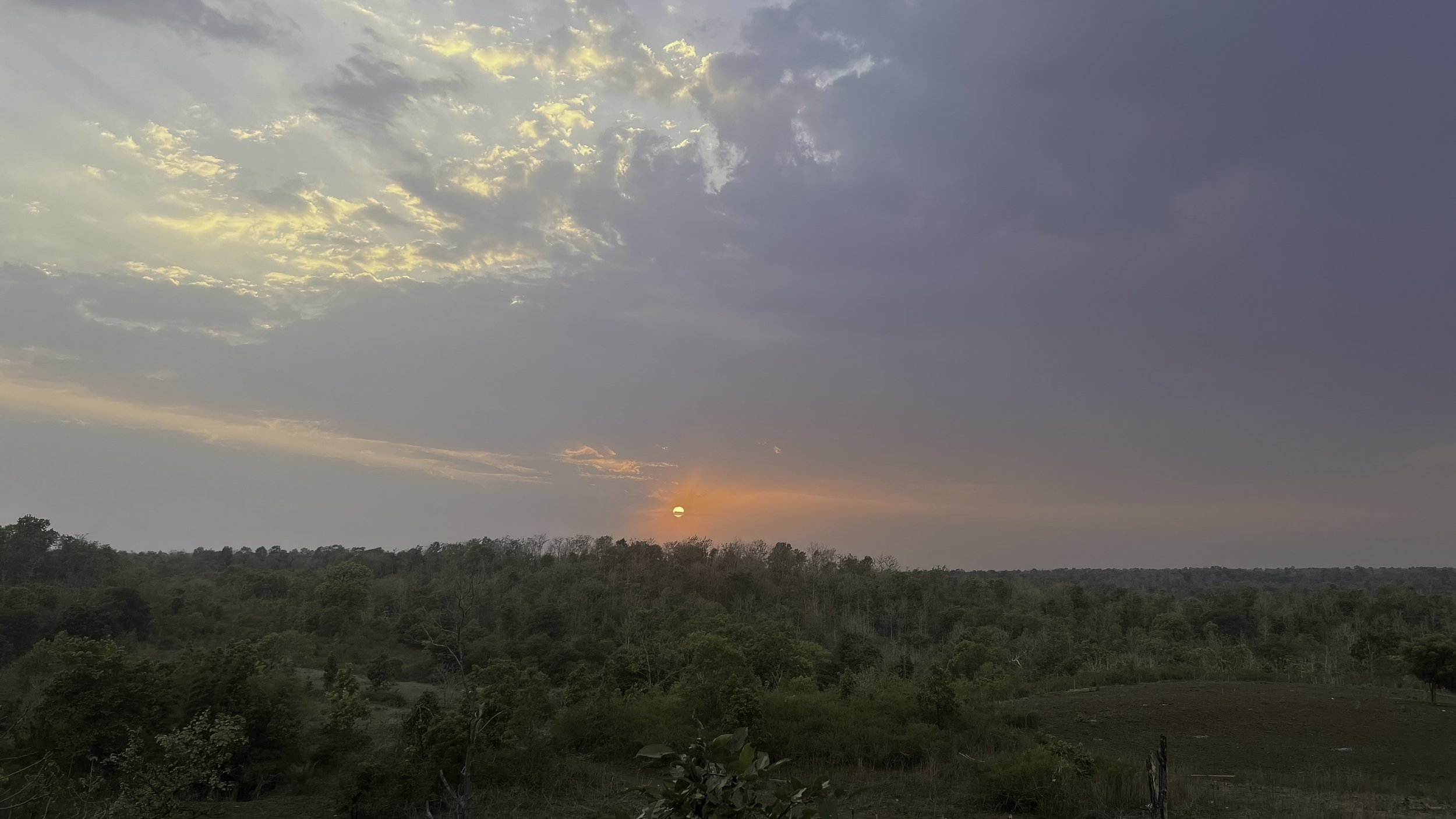
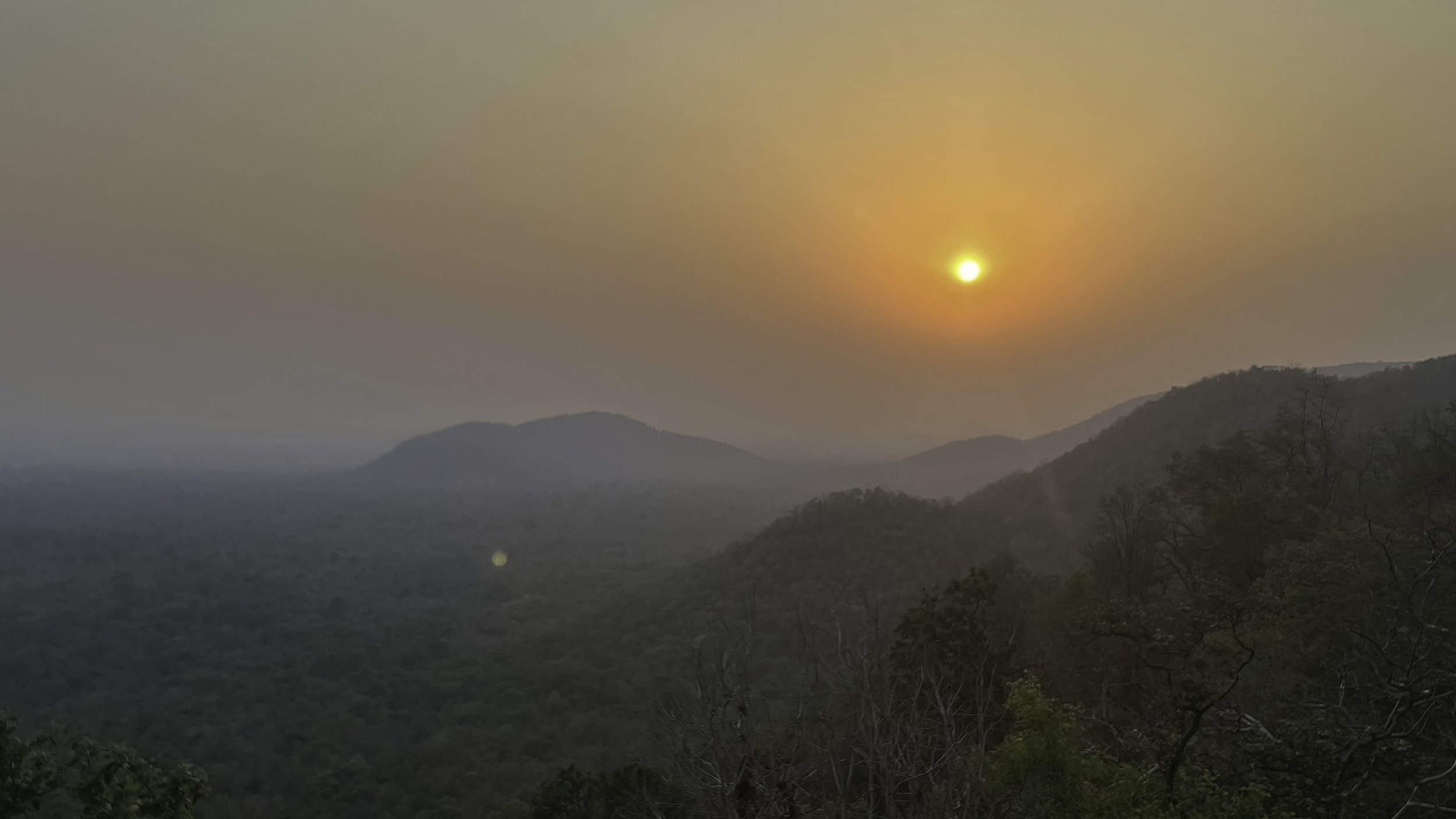
The Pranahita River follows a short course of 113 kilometers, strictly adhering to the boundary between the Gadchiroli district in Maharashtra and the Kumuram Bheem Asifabad, Mancherial, Jayashankar Bhupalapally districts in Telangana. The direction of flow is southward, unlike most rivers of the Deccan Plateau. Along its course, the river is flanked by thick forests and harbors rich biodiversity of flora and fauna. After completing its short journey, the river empties itself into the Godavari River at Kaleshwaram.
It is home to endangered species of vultures which have made the Palarapu rocks their home in the forests of Bejjur. The Sirpur forest is also home to tigers and other wild animals. Cotton and Paddy are the major crops grown in this area.
Incidentally a lot of my wildlife photography has been in and around the mighty Godavari and its various tributaries.
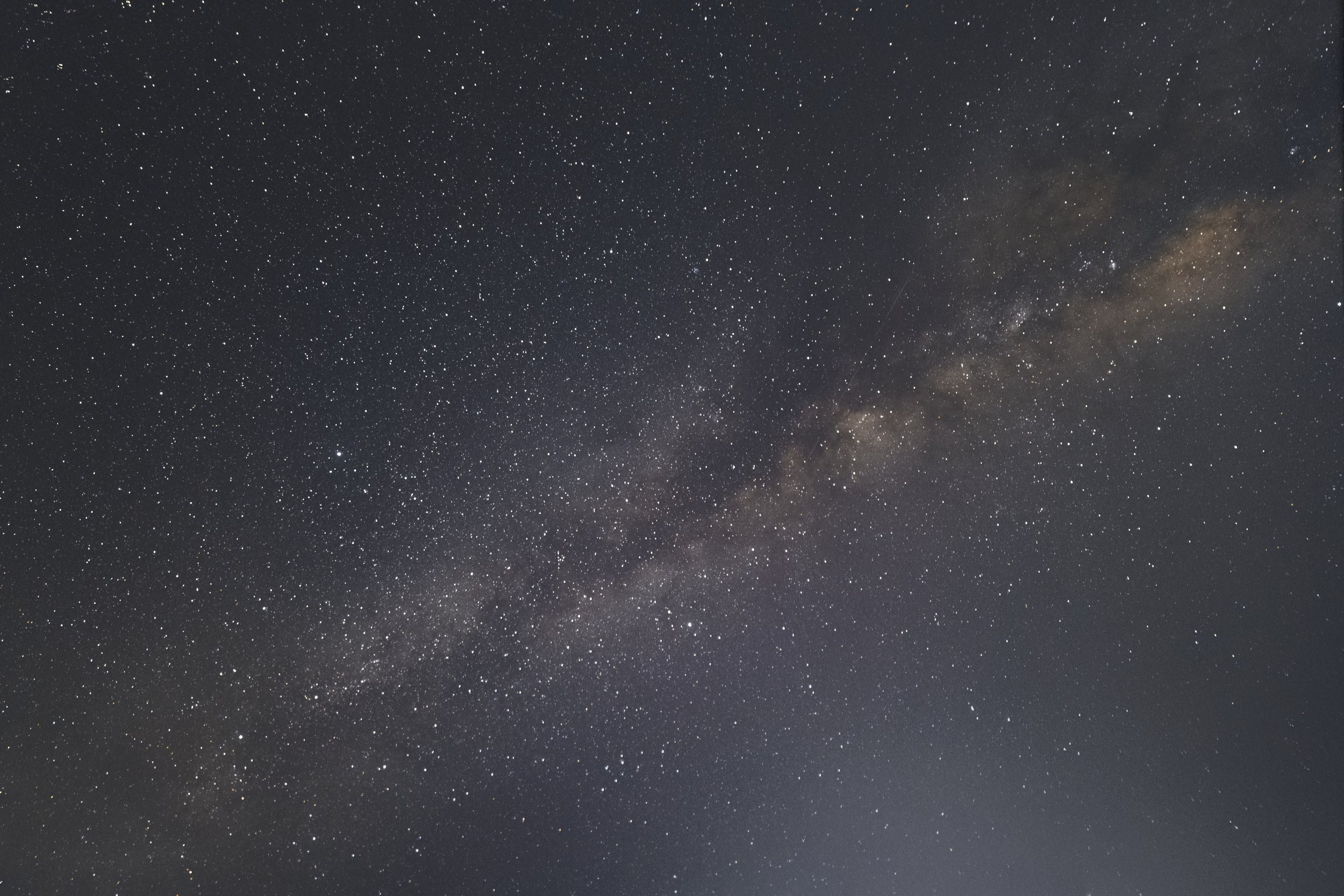

Looking Straight Up
Exif: Canon 1Dx Mark ii | Samyang (Rokinon) 14mm f/2.8 IF ED UMC | f/2.8 | 19 seconds | ISO 3200 | Manually focused with a Bahtinov Mask & WB set to Manual at 3550k.
Stacked Image composed of 35 Light frames and 25 Dark Frames for Noise elimination.
There are two images here:
A colour stack of 35 Light and 25 Dark frames stacked in Starry Sky Stacker and processed in LightRoom
A colour stack of the same 35 Light & 25 Dark frames with the background extracted & stacked in Siril and processed in Photoshop for more detail.
In both images the final result looks stretched on the outer edges given the extreme view of the angled 14mm perspective. I was trying to get the Milky Way to stretch diagonally across the frame. In both images the star Vega is clearly visible but the Siril stack clearly illustrates the dust lanes and star clusters and the huge number of stars - far more than what is visible in the Starry Sky Stack.
Light Pollution Map of Hyderabad, India
Light Pollution Map of Telangana
I am sure all of us at some point in time have gone out at night to a reasonably remote location and seen an incredibly beautiful night sky with millions of stars shining back at us, or even the beautiful arc of the Milky Way. But to photograph the Milky Way is pretty difficult and the presence of light pollution makes it worse. That said though, it IS possible to capture the Milky Way through light pollution by using a technique called Expose To The Right, or ETTR. Read about photographing the Milky Way from Light Polluted areas.
Generally speaking, the best time to see the Milky Way in the Northern Hemisphere is during the Milky Way season - between February and October - ideally between 00:00 hrs and 05:00 hrs, preferably on new moon nights. This will vary depending on the latitude, and other factors like moon phases, prevalent cloud cover & the intrusive presence of light pollution. The position of the Milky Way in the sky also changes depending on the location.
With winter ending and spring beginning, the Milky Way's core, becomes visible in the early morning sky, rising in the southeast and moving south reaching peak visibility towards the middle of summer. The photos you see here with the Core are facing South - Image 1 & Image 2, and the outer arm of the Milky Way can be observed rising to the North in Image 3. Towards North we are facing away from the galactic center in Sagittarius and instead looking outward. Stars thin out across the galaxy's flattened disk until our gaze meets the abyss of intergalactic space.
A long exposure from a camera will pick up more stars and colors than the human eye can. The contrast on the photos can also be enhanced later, so the view doesn’t always match exactly what the naked eye sees. But what you can see with just your eyes under a truly dark sky is still spectacular.
The Milky Way galaxy is one out of at least 100 billion in the universe. And the Milky Way itself contains about 100 billion stars. Our galaxy stretches 100,000 light years wide. Every star you can see with the unaided eye is located within the Milky Way. The only object you can see (without optical aid) in the sky outside of the Milky Way is the Andromeda Galaxy. Andromeda is over 2.5 million light years from earth; much too far to resolve individual stars without a powerful telescope.
But when most people talk about “seeing the Milky Way”, they are talking about the core of the galaxy. Located in the constellation Sagittarius, this is the brightest part with dust lanes, nebulas, and star clusters are all more concentrated in this area. See some I have photographed in my Deep Sky Gallery.
Light pollution has a devastating impact not just on the night sky but on nature as well. As the human population explodes & town and cities grow, light pollution is growing at an alarming rate & is largely going unchecked. Not only is this luminous fog drowning out the stars and our view to the rest of the universe, but it also causes disruptions in circadian rhythms and the balance of ecosystems.
A recent study showed that 1/3 of the world’s population will never see the Milky Way with their naked eye. According to available studies, around 70% of India’s population is estimated to live under light polluted skies, meaning the night sky is obscured by artificial light with the major cities experiencing particularly high levels of light pollution.
But just over a hundred years ago everybody could see the Milky Way from the comfort of their own homes and gardens.
Light pollution is impacting wildlife, especially the predators of the night, it is impacting humans and their sleep patterns & hormonal patterns. We have a responsibility to protect our wildlife and protect our own health and cutting down on light pollution is not just good for wildlife and humans but it makes good economic sense too as we owe a lot to our night skies. Everything you see and hear here - excluding the background music - is recorded on site.
I have also included all the exif information with each section.
The 9% Waxing Crescent Moon on 30 April 2025. Although this wasn’t a factor as the moon had already set at 21:41 hrs and would not rise till 08:45 hrs on 01 May 2025.
The 17% Waxing Crescent Moon on 01 May 2025.
Facing South East
Exif: Canon 1Dx Mark ii | Samyang (Rokinon) 14mm f/2.8 IF ED UMC | f/2.8 | 19 seconds | ISO 6400 | Manually focused with a Bahtinov Mask & WB set to Manual at 3550k.
Stacked Image composed of 15 Light frames and 15 Dark Frames for Noise elimination. The cottage in the foreground is lit from within with a tiny Lume Cube Air wearing a Warm Diffuser
Facing North North East
Exif: Canon 1Dx Mark ii | Samyang (Rokinon) 14mm f/2.8 IF ED UMC | f/2.8 | 19 seconds | ISO 6400 | Manually focused with a Bahtinov Mask & WB set to Manual at 3550k.
Stacked Image composed of 20 Light frames and 20 Dark Frames for Noise elimination.
The rotation of the earth is what causes the stars to appear to move across the sky every night. But the earth does not actually take 24 hours to make a full rotation. It takes 23 hours and 56 minutes. This 4 minute difference is what causes the stars to change from night to night. Every night a given star will rise, cross the sky, or set 4 minutes earlier compared to the previous night. This change amounts to 2 hours every month. For example if the milky way rises at midnight tonight, a month from now it will be rising at 10pm. If you go out at the same time, the sky will look quite a bit different.
Unfortunately in modern times it is not possible for many to get somewhere completely devoid of light pollution (a black or gray zone on the light pollution maps above). But a blue or green zone can still provide an impressive view of the milky way. Some degree of selection needs to be exercised while choosing a site, and look at more than just the color zone. The Milky Way rises in the southeast, crosses the southern horizon, and then sets in the southwest. So a viewing site that does not have any major cities in that direction will work the best. Even if the sky overhead is very dark, a light dome from a city can ruin the view if it is located to the south as you can see in the 180° panorama below.
180° Panorama from North to South with the Milky Way Core faintly visible above the light pollution from a cement factory to the South East (right of frame behind the cottage with the lit window) - some 12 kms away as the crow flies. There is another slight glow towards the North (left of frame) from a nearby village.
A total of 14 photos stitched from two rows of 7 photos each in portrait mode. The cottage in the foreground is lit from within with a tiny Lume Cube Air wearing a Warm Diffuser and the two people on the extreme right are lit by their mobile devices.
Exif: Canon 1Dx Mark ii | EF 24-70mm f/4L IS USM @ 24mm | f/4 | 10 seconds | ISO 3200 | Manually focused with a Bahtinov Mask & WB set to Manual at 3550k. This Panorama was the first image I took and there was still some light in the sky from the Moon which had just set.
The Holy Grail Timelapse
Sunrise and sunset are the golden hours of timelapse photography, and the most beautiful way to capture them is using the “Holy grail technique”. But why is this technique called the Holy Grail? The “Holy Grail” epithet simply signifies just how insanely difficult it was to make such a timelapse given how QUICKLY and more crucially how DRAMATICALLY the light changed from the start of the timelapse to its end. Luckily for us today, camera technology has caught up and it has made shooting and editing a holy grail timelapse almost as simple as any ordinary timelapse especially if you have the tools to facilitate.
The key to getting a holy grail timelapse is remembering why you are even shooting it in the first place. You want to see the scene change, and in this case the light as well. So when you are on the location, ask yourself what the most interesting thing on the scene is. Your composition rules like the rule of thirds and symmetry are going to be great rules of thumb to follow. But you may also want to have your viewer follow the path of the sun. TV shows will often use a sunset time lapse to transition into nighttime. This is a great visual cue.
What makes a good holy grail timelapse is often going to be the nice beautiful colours of the sky, the dramatic change of light in such a short time, the passage of clouds over a wide landscape where their shadows travel across the land. Or the silhouettes of mountains or buildings. Or maybe a setting where a city turns to life after sunset, or wakes up after a sunrise. The best ones are going to combine the above with great composition. This is going to come with practice because planning and shooting a sunset time lapse are a bit tricky.
So how does one go about shooting the Holy Grail of timelapses?
ALWAYS shoot RAW, as they contain way more data than JPEG files
Turn off image stabilisation (IS) in your camera and lens.
Focus manually preferably at the Hyperfocal distance so you have everything from Minimum focus distance to infinity in focus.
Ensure the camera is in Manual Mode or Aperture Mode. Aperture Priority mode is a semi-automatic mode giving us the most flexible shooting options and is very reliable. Aperture priority mode will change all the camera settings in the shoot EXCEPT the aperture. This can help reduce the flicker if one is uncomfortable doing it manually.
ISO - I usually tend to start my sunset timelapses from ISO 100. Sunrises will depend on the ambient light available and the combination of aperture, shutter and ISO to get the best exposure.
White Balance - I’ve tried both AWB and setting a manual WB and the choice usually depends on how much time I have before I start shooting. Since I shoot in RAW I can always modify and match the WB while I am editing.
Take time and GET the correct exposure for the first image - choose the aperture you want, choose the ISO you want to start at and work out the best shutter speed to get the perfect exposure - whites are not blown out and the shadows are not crushed. This makes everything that follows easy to manage.
Use an intervalometer and choose the Interval between the frames. This depends on how fast the sun is setting or will disappear from view. Preferably at least 6 - 5 secs and make sure the intervalometer runs an infinite amount of times.
Last but not the least, make sure the battery is fully charged, and the memory card is empty to avoid any problem while storing.
For the Timelapse I used my trusty Canon 1Dx Mark ii paired with the EF 24-70mm f/4L IS USM. The camera was perched on my ever reliable ProMediaGear sticks and I have used the Tiffen Black Satin 3 filter to bloom the highlights.
Exif: Canon 1Dx Mark ii | EF 24-70mm f/4L IS USM @ 24mm | f/4 ramping to f/16 | 10 second ramping to 1/250 second | ISO 3200 ramping to ISO 100 | Manually focused with a Bahtinov Mask & WB set to Manual at 3550k.
Timelapse Start: 04:02:15 | Timelapse End: 06:34:25 | Total Duration of shoot: ~ 2 hours 32 minutes
Audio Recording Equipment: Zoom H1N | Roland CS-10EM Binaural Microphones & Earphones | SwitchPod Handheld Mini Tripod. All the audio you hear within the timelapse is recorded at the site as the timelapse was being shot. It starts with the song of the Cicadas at night culminating in the beautiful dawn chorus of the birds as they start to wake up.
Find everything I have used in my Kit Bag.
The silent & devastating impact of Light Pollution and solutions to mitigate it
Most environmental pollution on Earth comes from humans and their inventions. Take, for example, the automobile or that miraculous human-made material, plastic. Today, automobile emissions are a major source of air pollution contributing to climate change, and plastics fill our ocean, creating a significant health hazard to marine animals.
And what about the electric lightbulb, thought to be one of the greatest human inventions of all time? Electric light can be a beautiful thing, guiding us home when the sun goes down, keeping us safe and making our homes cozy and bright. However, like carbon dioxide emissions and plastic, too much of a good thing has started to negatively impact the environment. Light pollution, the excessive or inappropriate use of outdoor artificial light, is affecting human health, wildlife behavior, and our ability to observe stars and other celestial objects.
Every day needs a night and all around us, this unintended pollutant is taking a silent toll. Each year, thousands of migrating birds and shorebirds are killed because of unnecessary artificial light at night. Light pollution threatens aquatic ecosystems by increasing the risk of harmful algae blooms. It also impacts our circadian rhythms and degrades our quality of life by eradicating our access to the wonder of beautiful night skies.
Light pollution is a global issue. This became glaringly obvious when the World Atlas of Night Sky Brightness, a computer-generated map based on thousands of satellite photos, was published in 2016. Available online for viewing, the atlas shows how and where our globe is lit up at night. Vast areas of North America, Europe, the Middle East, and Asia are glowing with light, while only the most remote regions on Earth (Siberia, the Sahara, and the Amazon) and places like Ladakh in India are in total darkness. Some of the most light-polluted countries in the world are Singapore, Qatar, and Kuwait. According to available studies, around 70% of India’s population is estimated to live under light polluted skies, meaning the night sky is obscured by artificial light with the major cities experiencing particularly high levels of light pollution.
Sky glow is the brightening of the night sky, mostly over urban areas, due to the electric lights of cars, streetlights, offices, factories, outdoor advertising, bright hoardings, and buildings, turning night into day for people who work and play long after sunset. People living in cities with high levels of sky glow have a hard time seeing more than a handful of stars at night. Astronomers are particularly concerned with sky glow pollution as it reduces their ability to view celestial objects. More than 80 percent of the world’s population, and 99 percent of Americans and Europeans, live under sky glow. It sounds pretty, but sky glow caused by anthropogenic activities is one of the most pervasive forms of light pollution.
Time to Wake Up?
Artificial light can wreak havoc on natural body rhythms in both humans and animals. Nocturnal light interrupts sleep and confuses the circadian rhythm — the internal, twenty-four-hour clock that guides day and night activities and affects physiological processes in nearly all living organisms. One of these processes is the production of the hormone melatonin, which is released when it is dark and is inhibited when there is light present. An increased amount of light at night lowers melatonin production, which results in sleep deprivation, fatigue, headaches, stress, anxiety, and other health problems. Recent studies also show a connection between reduced melatonin levels and cancer. In fact, new scientific discoveries about the health effects of artificial light have convinced the American Medical Association (AMA) to support efforts to control light pollution and conduct research on the potential risks of exposure to light at night. Blue light, in particular, has been shown to reduce levels of melatonin in humans. Blue light is found in cell phones and other computer devices, as well as in light-emitting diodes (LEDs), the kinds of bulbs that have become popular at home and in industrial and city lighting due to their low cost and energy efficiency.
Not just humans, Wildlife is impacted as well!
Studies show that light pollution is also impacting animal behaviors, such as migration patterns, wake-sleep habits, and habitat formation. Because of light pollution, sea turtles and birds guided by moonlight during migration get confused, lose their way, and often die. Large numbers of insects, a primary food source for birds and other animals, are drawn to artificial lights and are instantly killed upon contact with light sources. Birds are also affected by this, and many cities have adopted a “Lights Out” program to turn off building lights during bird migration.
A study of blackbirds (Turdus merula) in Germany found that traffic noise and artificial night lighting causes birds in the city to become active earlier than birds in natural areas—waking and singing as much as five hours sooner than their country cousins. Even animals living under the sea may be affected by underwater artificial lighting. One study looked at how marine animals responded to brightly lit panels submerged under water off the coast of Wales. Fewer filter feeding animals, such as the sea squirt and sea bristle, made their homes near the lighted panels. This could mean that the light from oil rigs, passing ships, and harbors is altering marine ecosystems. In Singapore, I have seen common kingfishers become disoriented by the bright city lights of the CBD and crash into the high rises and plummet to their deaths on the pavement below. It was heart breaking to step out of my office at the time and see a kingfisher lying dead on the ground. Even in places meant to provide protected natural habitats for wildlife, light pollution is making an impact. The National Park Service (NPS) has made maintaining a dark night sky a priority. The NPS Night Skies Team has been monitoring night sky brightness in some one hundred parks, and nearly every park showed at least some light pollution.
There are four other kinds of light pollution: glare, clutter, light trespass and skyglow.
Glare – The excessive brightness that can cause discomfort to the eyes.
Clutter – A term used to describe the excessive, bright and confusing groupings of lights.
Light trespass – When light falls where it was not needed or intended.
Skyglow – The brightening of night skies over populated areas
The good news is, the solution is as easy as screwing in a lightbulb. Light pollution is something we can all help erase, in our homes and gardens, the parks that we play in, and the cities and towns we call home. There are several organizations working to reduce light pollution. One of these is the U.S.-based International Dark Sky Association (IDA), formed in 1988 to preserve the natural night sky. IDA educates the public and certifies parks and other places that have worked to reduce their light emissions. In 2017, the IDA approved the first U.S. dark sky reserve. The massive Central Idaho Dark Sky Reserve, which clocks in at 3,667 square kilometers (1,416 square miles), joined eleven other dark sky reserves established around the world. As of December of 2018, IDA lists thirteen dark sky reserves on their site.
Light pollution is reversible!
We can all make a difference. It is not enough to be aware of the problem. You must take action. Everyone who wants to upgrade their outdoor lighting should aim for a minimum energy consumption. Understanding that wasted light is wasted energy supports not only the switch to LEDs, which are more directional than HIDs, but it also means that reducing lighting pollution supports efficiency goals. Lighting energy consumption is reduced even more by integrating controls. There are other factors to consider, especially when artificial lighting is added to the landscape at night.
The night is vital to the earth’s eco-system. Outdoor lighting can be attractive and achieve efficiency goals while providing good visibility. It should also reduce nighttime disturbance.
Things We Can All Do
More people are taking action to reduce light pollution and bring back the natural night sky. Many have adopted legislation to control outdoor lighting, and manufacturers have designed and produced high-efficiency light sources that save energy and reduce light pollution. Individuals are urged to use outdoor lighting only when and where it is needed, to make sure outdoor lights are properly shielded and directing light down instead of up into the sky, and to close window blinds, shades, and curtains at night to keep light inside. Here are some steps we as individuals can take to mitigate Light Pollution.
#1 Turn Off Lights When Not in Use
Many of us are already pre-conditioned to do this when our parents gave us a scolding for leaving the room without turning off the lights. But if you have slowly grown out of the habit, now’s a great time to restart it. Not only does turning off lights help contribute to lessening overall light pollution, it reduces your energy costs at home. LEDs and compact fluorescents (CFLs) can help reduce energy use and protect the environment, but only warm-colored bulbs should be used.
#2 Use Fewer Lights When Inside
Building on #1, it’s just good practice to only use light that you absolutely need. If you appreciate low, ambient lighting, you’re already off to a great start. Having dimmers installed in every room also allows for using less light overall. Dimmers, motion sensors, and timers can help to reduce average illumination levels and save even more energy.
#3 Keep The Curtains Closed At Night
After the sun sets, try to get in the habit of using the curtains or shades to keep room lights from escaping your house or hotel room, as it contributes to the light pollution outdoors. This also allows for your own privacy, especially in close quarters such as in hotel or apartment buildings. Outdoor lighting fixtures that shield the light source to minimize glare and light trespass help prevent light pollution. An illustrated guide to acceptable vs. unacceptable types of light fixtures can be found here. Unnecessary indoor lighting — particularly in empty office buildings at night — should be turned off. This will help prevent leakage of interior light into the night sky.
#4 Avoid Driving at Night
For many, driving at night is like driving in an entirely different world, and some of us have a lack of depth perception, to boot. So unless it’s necessary, avoid driving at night; not only is it safer, using headlights contributes to the degradation of our gorgeous night skies. Especially in India where a substantially large percent of urban drivers use High Beams while driving. Some have even modified the stock lights in their cars to a point where it blinds oncoming traffic and leads to accidents. Some examples you can observe in the timelapse - between 00:47 and 01:13 - specifically at 01:10 when a few vehicles top out on the distant road the high powered headlights are clearly visible and also the extent of their throw from multiple kilometers away.
#5 Turn Off All Lights When Going to Sleep
This goes without saying, but when you’re asleep you don’t need lights! Small night lights to illuminate your way during that midnight bathroom brake are okay, as well as motion sensor lights for safety. The best example is the source of artificial light in my timelapse - the light was on through out the night and into the morning. Incidentally there are street lights which were off and this single light at what I think was a pump house was on almost blanking out the Milky Way itself. This could very easily have been turned off or a motion sensitive low intensity light could have been used.
#6 When Going Outside, Point Your Lights Towards the Ground
When using flashlights or headlights outside to illuminate your way, always try to point them down to the ground. Believe it or not, pointing that tiny ray of light upwards does contribute to light pollution! This is also good practice if you do any night hiking, or night driving whether in the city or in rural areas. This can be observed all through the timelapse.
#7 Use Night Shift Settings on All Devices
Nowadays, with all of our devices such as home computers, laptops, IPads, phones, etc. it has the potential to contribute just as much (or more) to light pollution than regular room lights. Especially when everyone in the family is using them. After dark, the bright lights of our screens are not needed, so switch to a dimmer night setting. It’s also good for our eyes especially since most computer, iPad and phones screens are blue light. Ideally the use of blue lights at night should be avoided:
Outdoor lighting with strong blue content is likely to worsen sky glow because it has a significantly larger geographic reach than lighting consisting of less blue.
Blue-rich white light sources are also known to increase glare and compromise human vision, especially in the aging eye. These lights create potential road safety problems for motorists and pedestrians alike. In natural settings, blue light at night has been shown to adversely affect wildlife behavior and reproduction. This particularly true in cities, which are often stopover points for migratory species.
DarkSky recommends that only warm-appearing light sources be used for outdoor lighting. This includes low-pressure sodium (LPS), high-pressure sodium (HPS), and low-CCT LEDs.
“Warm” toned or filtered LEDs (CCT 3000 K or lower; S/P ratio 1.2 or lower) should be used to minimize blue emission.
#8 Let Your Eyes Adjust to Less Light Instead of Turning on Lights
Sometimes we are used to absentmindedly turning on the lights full blast after the sun sets. But it’s kind of amazing to know that our eyes can adjust rather nicely to no-light or low-light settings if we just give it a few minutes. Don’t believe us? Try it!
#9 Unplug from Devices as the Sun Sets
Going a step further from point number seven, reducing the use of our devices in the evening is always a great habit to form. We’ve all heard of the potential dangers of too much screen time. After dinner, make it a rule to unplug completely. After a few days, you’ll find that it’s pretty easy.
#10 Use Only Downward Facing Lights Inside When You Can
When light points upward it contributes directly to the artificial sky glow – that glow you see over urban and rural areas from a cumulative array of lights. This sky glow spills over into neighboring areas and can also disrupt wildlife. Install light shields for any outdoor lighting set-ups to help direct the light downward to a specific area.
In conclusion, natural darkness should be the default at night – artificial light should be used only for a specific purpose. Remembering that indoor lighting also contributes to light pollution outside, and keeping the above in mind ensures a cleaner and more beautiful night sky for all to enjoy.
Facing South
Exif: Canon 1Dx Mark ii | Samyang (Rokinon) 14mm f/2.8 IF ED UMC | f/2.8 | 19 seconds | ISO 3200 | Manually focused with a Bahtinov Mask & WB set to Manual at 3550k.
Stacked Image composed of 35 Light frames and 25 Dark Frames for Noise elimination.
Related Posts


